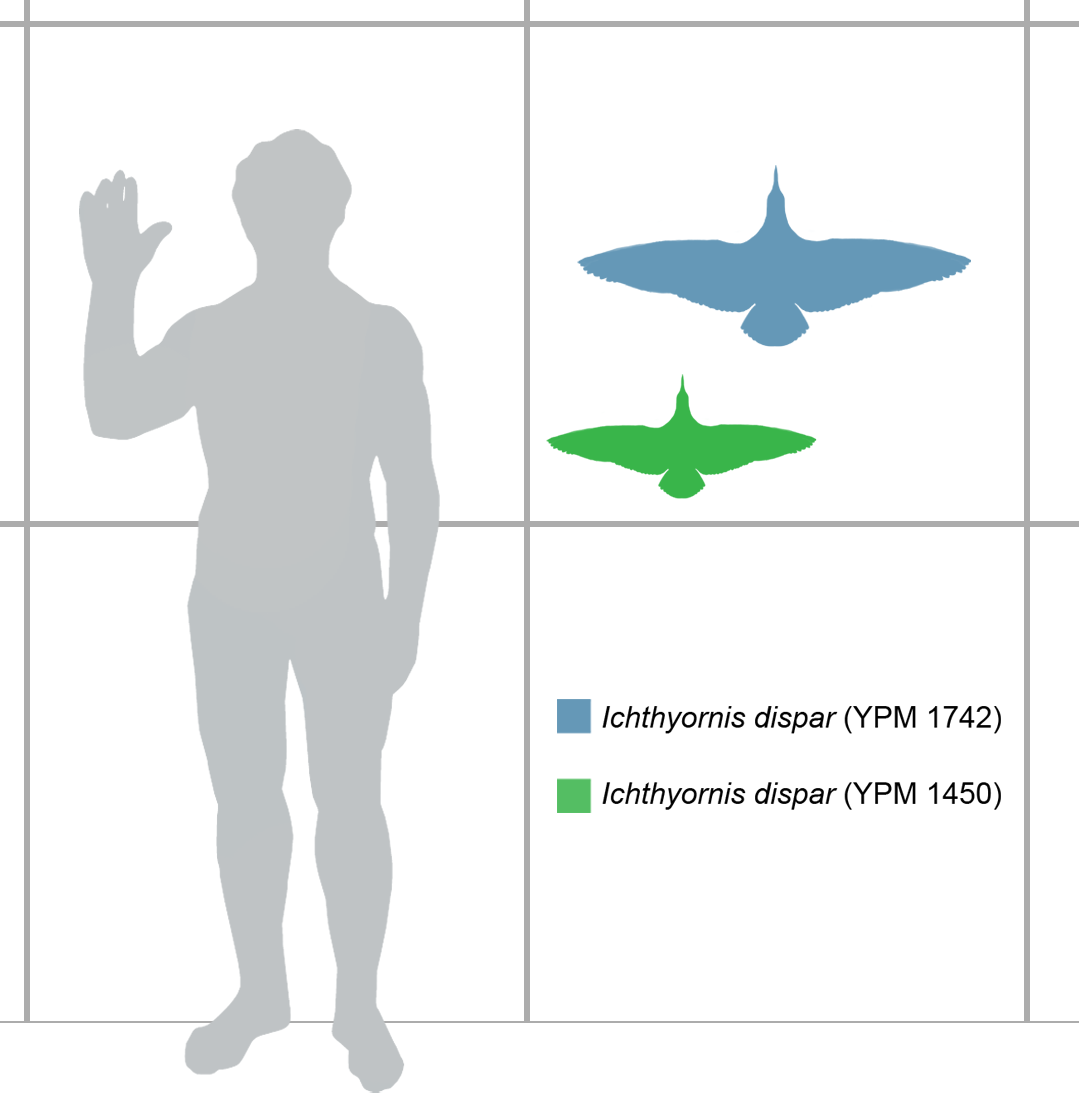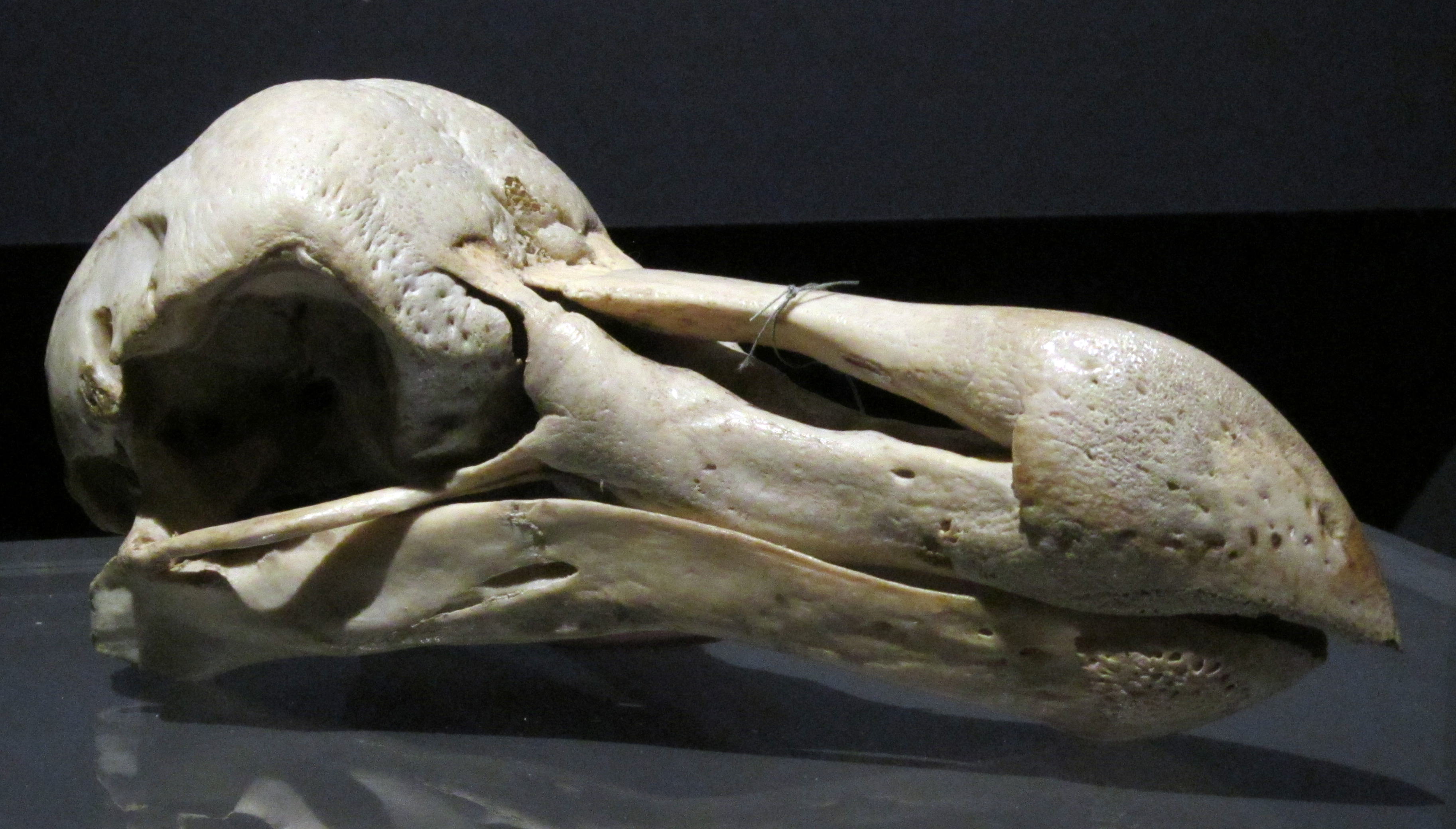|
Carinatae
Carinatae is the group of all birds and their extinct relatives to possess a keel, or "carina", on the underside of the breastbone used to anchor large flight muscles. Classification Definition Traditionally, Carinatae were defined as all birds whose sternum (breast bone) has a keel (''carina''). The keel is a strong median ridge running down the length of the sternum. This is an important area for the attachment of flight muscles. Thus, all flying birds have a pronounced keel. Ratites, all of which are flightless, lack a strong keel. Thus, living birds were divided into carinatae (keeled) and ratites (from ''ratis'', "raft", referring to the flatness of the sternum). The difficulty with this scheme phylogenetically was that some flightless birds, without strong keels, are descended directly from ordinary flying birds possessing one. Examples include the kakapo, a flightless parrot, and the dodo, a columbiform (the pigeon family). Neither of these birds are a ratite. Thus, this ... [...More Info...] [...Related Items...] OR: [Wikipedia] [Google] [Baidu] |
Keel (bird Anatomy)
A keel or carina (plural carinae) in bird anatomy is an extension of the sternum (breastbone) which runs axially along the midline of the sternum and extends outward, perpendicular to the plane of the ribs. The keel provides an anchor to which a bird's wing muscles attach, thereby providing adequate leverage for flight. Not all birds have keels; in particular, some flightless birds lack a keel structure. Without a keel a bird will not be able to fly. Some flightless birds have a keel, such as the penguin; but in the penguin's case, its wings are too small for its body, so flight would require flapping its wings too fast to be practical. Historically, the presence or absence of a pronounced keel structure was used as a broad classification of birds into two orders: Carinatae (from ''carina'', "keel"), having a pronounced keel; and ratites (from ''ratis'', "raft"referring to the flatness of the sternum), having a subtle keel structure or lacking one entirely. However, this class ... [...More Info...] [...Related Items...] OR: [Wikipedia] [Google] [Baidu] |
Keel (bird)
A keel or carina (plural carinae) in bird anatomy is an extension of the sternum (breastbone) which runs axially along the midline of the sternum and extends outward, perpendicular to the plane of the ribs. The keel provides an anchor to which a bird's wing muscles attach, thereby providing adequate leverage for flight. Not all birds have keels; in particular, some flightless birds lack a keel structure. Without a keel a bird will not be able to fly. Some flightless birds have a keel, such as the penguin; but in the penguin's case, its wings are too small for its body, so flight would require flapping its wings too fast to be practical. Historically, the presence or absence of a pronounced keel structure was used as a broad classification of birds into two orders: Carinatae (from ''carina'', "keel"), having a pronounced keel; and ratites (from ''ratis'', "raft"referring to the flatness of the sternum), having a subtle keel structure or lacking one entirely. However, this class ... [...More Info...] [...Related Items...] OR: [Wikipedia] [Google] [Baidu] |
Ichthyornis
''Ichthyornis'' (meaning "fish bird", after its fish-like vertebrae) is an extinct genus of toothy seabird-like ornithuran from the late Cretaceous period of North America. Its fossil remains are known from the chalks of Alberta, Alabama, Kansas (Greenhorn Limestone), New Mexico, Saskatchewan, and Texas, in strata that were laid down in the Western Interior Seaway during the Turonian through Campanian ages, about 95–83.5 million years ago. ''Ichthyornis'' is a common component of the Niobrara Formation fauna, and numerous specimens have been found. ''Ichthyornis'' has been historically important in shedding light on bird evolution. It was the first known prehistoric bird relative preserved with teeth, and Charles Darwin noted its significance during the early years of the theory of evolution. ''Ichthyornis'' remains important today as it is one of the few Mesozoic era ornithurans known from more than a few specimens ... [...More Info...] [...Related Items...] OR: [Wikipedia] [Google] [Baidu] |
Pigeon
Columbidae () is a bird family consisting of doves and pigeons. It is the only family in the order Columbiformes. These are stout-bodied birds with short necks and short slender bills that in some species feature fleshy ceres. They primarily feed on seeds, fruits, and plants. The family occurs worldwide, but the greatest variety is in the Indomalayan and Australasian realms. The family contains 344 species divided into 50 genera. Thirteen of the species are extinct. In English, the smaller species tend to be called "doves" and the larger ones "pigeons". However, the distinction is not consistent, and does not exist in most other languages. Historically, the common names for these birds involve a great deal of variation between the terms. The bird most commonly referred to as just "pigeon" is the domestic pigeon, which is common in many cities as the feral pigeon. Doves and pigeons build relatively flimsy nests, often using sticks and other debris, which may be placed on bra ... [...More Info...] [...Related Items...] OR: [Wikipedia] [Google] [Baidu] |
Confuciusornis
''Confuciusornis'' is a genus of basal crow-sized avialan from the Early Cretaceous Period of the Yixian and Jiufotang Formations of China, dating from 125 to 120 million years ago. Like modern birds, ''Confuciusornis'' had a toothless beak, but closer and later relatives of modern birds such as ''Hesperornis'' and ''Ichthyornis'' were toothed, indicating that the loss of teeth occurred convergently in ''Confuciusornis'' and living birds. It is the oldest known bird to have a beak. It was named after the Chinese moral philosopher Confucius (551–479 BC). ''Confuciusornis'' is one of the most abundant vertebrates found in the Yixian Formation, and several hundred complete specimens have been found. History of discovery In November 1993, the Chinese paleontologists Hou Lianhai and Hu Yoaming of the Institute of Vertebrate Paleontology and Paleoanthropology (IVPP) at Beijing, visited fossil collector Zhang He at his home in Jinzhou, where he showed them a fossil bird specimen t ... [...More Info...] [...Related Items...] OR: [Wikipedia] [Google] [Baidu] |
Apomorphy
In phylogenetics, an apomorphy (or derived trait) is a novel character or character state that has evolved from its ancestral form (or plesiomorphy). A synapomorphy is an apomorphy shared by two or more taxa and is therefore hypothesized to have evolved in their most recent common ancestor. ) In cladistics, synapomorphy implies homology. Examples of apomorphy are the presence of erect gait, fur, the evolution of three middle ear bones, and mammary glands in mammals but not in other vertebrate animals such as amphibians or reptiles, which have retained their ancestral traits of a sprawling gait and lack of fur. Thus, these derived traits are also synapomorphies of mammals in general as they are not shared by other vertebrate animals. Etymology The word —coined by German entomologist Willi Hennig—is derived from the Ancient Greek words (''sún''), meaning "with, together"; (''apó''), meaning "away from"; and (''morphḗ''), meaning "shape, form". Clade analysis ... [...More Info...] [...Related Items...] OR: [Wikipedia] [Google] [Baidu] |
Ornithurae
Ornithurae (meaning "bird tails" in Greek) is a natural group which includes the common ancestor of ''Ichthyornis'', ''Hesperornis'', and all modern birds as well as all other descendants of that common ancestor. Classification Ernst Haeckel coined the name in 1866 and included in the group all "true birds" with the "characteristic tail morphology of all extant birds" (translation by Jacques Gauthier). This distinguishes the group from ''Archaeopteryx'', which Haeckel placed in another new group called Sauriurae. Said simply, modern birds have short, fused pygostyle tails, while ''Archaeopteryx'' retained the long tail characteristic of non-avian theropod dinosaurs.Haeckel, Ernst (1866). ''Generelle Morphologie der Organismen''. Berlin: Georg Reimer. Gauthier converted Ornithurae into a clade, giving it a branch-based definition: "extant birds and all other taxa, such as ''Ichthyornis'' and Hesperornithes, that are closer to extant birds than is ''Archaeopteryx''". Later he and ... [...More Info...] [...Related Items...] OR: [Wikipedia] [Google] [Baidu] |
Clade
A clade (), also known as a monophyletic group or natural group, is a group of organisms that are monophyletic – that is, composed of a common ancestor and all its lineal descendants – on a phylogenetic tree. Rather than the English term, the equivalent Latin term ''cladus'' (plural ''cladi'') is often used in taxonomical literature. The common ancestor may be an individual, a population, or a species (extinct or extant). Clades are nested, one in another, as each branch in turn splits into smaller branches. These splits reflect evolutionary history as populations diverged and evolved independently. Clades are termed monophyletic (Greek: "one clan") groups. Over the last few decades, the cladistic approach has revolutionized biological classification and revealed surprising evolutionary relationships among organisms. Increasingly, taxonomists try to avoid naming taxa that are not clades; that is, taxa that are not monophyletic. Some of the relationships between organisms ... [...More Info...] [...Related Items...] OR: [Wikipedia] [Google] [Baidu] |
Phylogenetic
In biology, phylogenetics (; from Greek φυλή/ φῦλον [] "tribe, clan, race", and wikt:γενετικός, γενετικός [] "origin, source, birth") is the study of the evolutionary history and relationships among or within groups of organisms. These relationships are determined by Computational phylogenetics, phylogenetic inference methods that focus on observed heritable traits, such as DNA sequences, protein amino acid sequences, or morphology. The result of such an analysis is a phylogenetic tree—a diagram containing a hypothesis of relationships that reflects the evolutionary history of a group of organisms. The tips of a phylogenetic tree can be living taxa or fossils, and represent the "end" or the present time in an evolutionary lineage. A phylogenetic diagram can be rooted or unrooted. A rooted tree diagram indicates the hypothetical common ancestor of the tree. An unrooted tree diagram (a network) makes no assumption about the ancestral line, and does ... [...More Info...] [...Related Items...] OR: [Wikipedia] [Google] [Baidu] |
Parrot
Parrots, also known as psittacines (), are birds of the roughly 398 species in 92 genera comprising the order Psittaciformes (), found mostly in tropical and subtropical regions. The order is subdivided into three superfamilies: the Psittacoidea ("true" parrots), the Cacatuoidea (cockatoos), and the Strigopoidea (New Zealand parrots). One-third of all parrot species are threatened by extinction, with higher aggregate extinction risk ( IUCN Red List Index) than any other comparable bird group. Parrots have a generally pantropical distribution with several species inhabiting temperate regions in the Southern Hemisphere, as well. The greatest diversity of parrots is in South America and Australasia. Characteristic features of parrots include a strong, curved bill, an upright stance, strong legs, and clawed zygodactyl feet. Many parrots are vividly coloured, and some are multi-coloured. Most parrots exhibit little or no sexual dimorphism in the visual spectrum. They form the most ... [...More Info...] [...Related Items...] OR: [Wikipedia] [Google] [Baidu] |
Dodo
The dodo (''Raphus cucullatus'') is an extinct flightless bird that was endemic to the island of Mauritius, which is east of Madagascar in the Indian Ocean. The dodo's closest genetic relative was the also-extinct Rodrigues solitaire. The two formed the subfamily Raphinae, a clade of extinct flightless birds that were a part of the family which includes pigeons and doves. The closest living relative of the dodo is the Nicobar pigeon. A white dodo was once thought to have existed on the nearby island of Réunion, but it is now believed that this assumption was merely confusion based on the also-extinct Réunion ibis and paintings of white dodos. Subfossil remains show the dodo was about tall and may have weighed in the wild. The dodo's appearance in life is evidenced only by drawings, paintings, and written accounts from the 17th century. Since these portraits vary considerably, and since only some of the illustrations are known to have been drawn from live specimens, ... [...More Info...] [...Related Items...] OR: [Wikipedia] [Google] [Baidu] |




.jpg)


